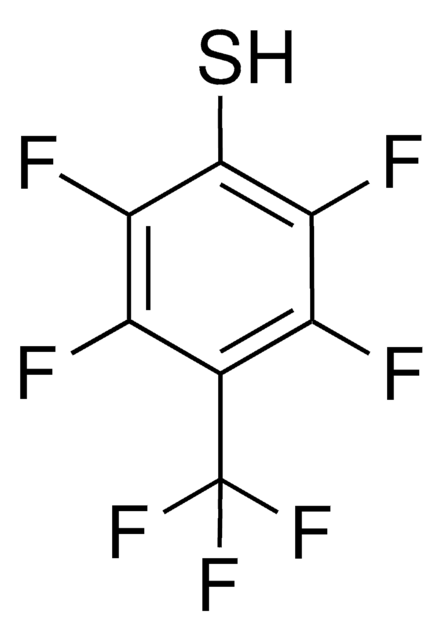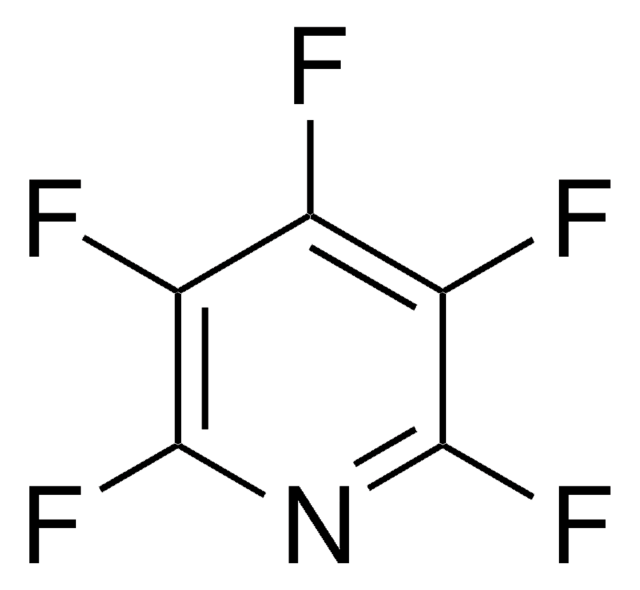About This Item
Polecane produkty
Próba
99%
Postać
liquid
współczynnik refrakcji
n20/D 1.424 (lit.)
tw
122-123 °C/750 mmHg (lit.)
gęstość
1.568 g/mL at 25 °C (lit.)
ciąg SMILES
Fc1c(F)c(F)c(Cl)c(F)c1F
InChI
1S/C6ClF5/c7-1-2(8)4(10)6(12)5(11)3(1)9
Klucz InChI
KGCDGLXSBHJAHZ-UHFFFAOYSA-N
Szukasz podobnych produktów? Odwiedź Przewodnik dotyczący porównywania produktów
Powiązane kategorie
Opis ogólny
Zastosowanie
- 1,2-difluoro-1,2-bis-(pentafluorophenyl)dichlorane via fluorination with elemental fluorine at 128°C
- 5-chloro-1-(difluorochloro)-2,3,4,5,6,6-hexafluoro-1,3-cyclohexadiene via reaction with chlorine trifluoride at −78°C
Hasło ostrzegawcze
Danger
Zwroty wskazujące rodzaj zagrożenia
Zwroty wskazujące środki ostrożności
Klasyfikacja zagrożeń
Acute Tox. 3 Inhalation
Kod klasy składowania
6.1C - Combustible acute toxic Cat.3 / toxic compounds or compounds which causing chronic effects
Klasa zagrożenia wodnego (WGK)
WGK 2
Środki ochrony indywidualnej
Eyeshields, Faceshields, Gloves, multi-purpose combination respirator cartridge (US)
Certyfikaty analizy (CoA)
Poszukaj Certyfikaty analizy (CoA), wpisując numer partii/serii produktów. Numery serii i partii można znaleźć na etykiecie produktu po słowach „seria” lub „partia”.
Masz już ten produkt?
Dokumenty związane z niedawno zakupionymi produktami zostały zamieszczone w Bibliotece dokumentów.
Klienci oglądali również te produkty
Nasz zespół naukowców ma doświadczenie we wszystkich obszarach badań, w tym w naukach przyrodniczych, materiałoznawstwie, syntezie chemicznej, chromatografii, analityce i wielu innych dziedzinach.
Skontaktuj się z zespołem ds. pomocy technicznej













